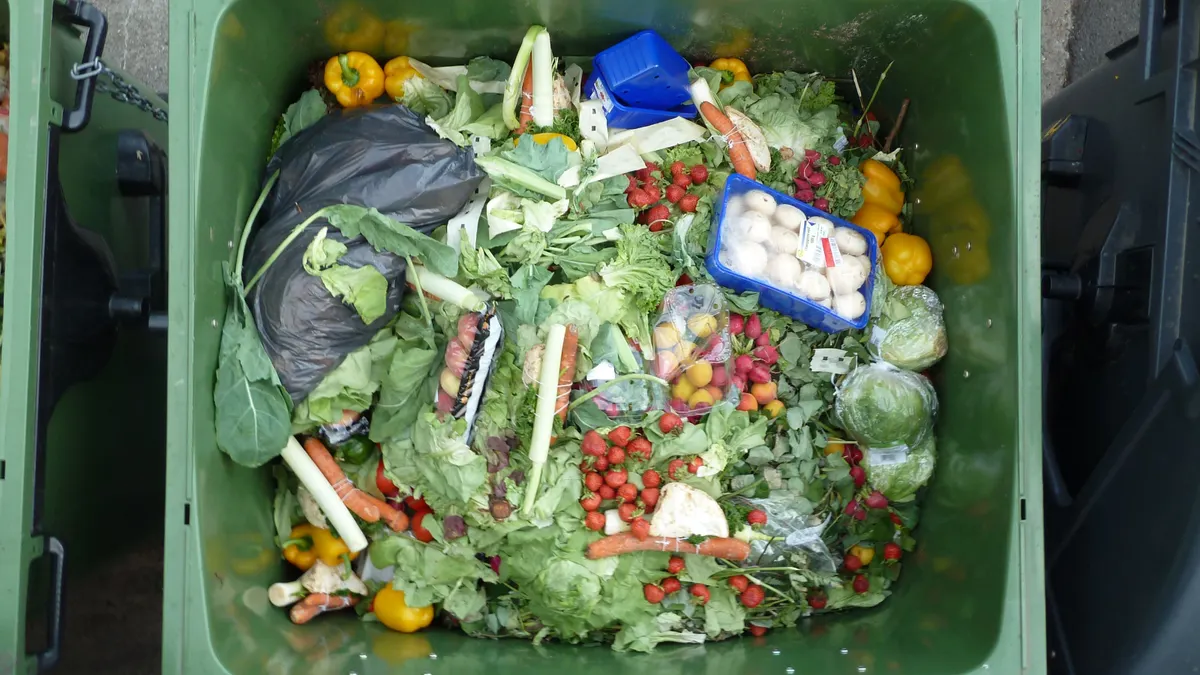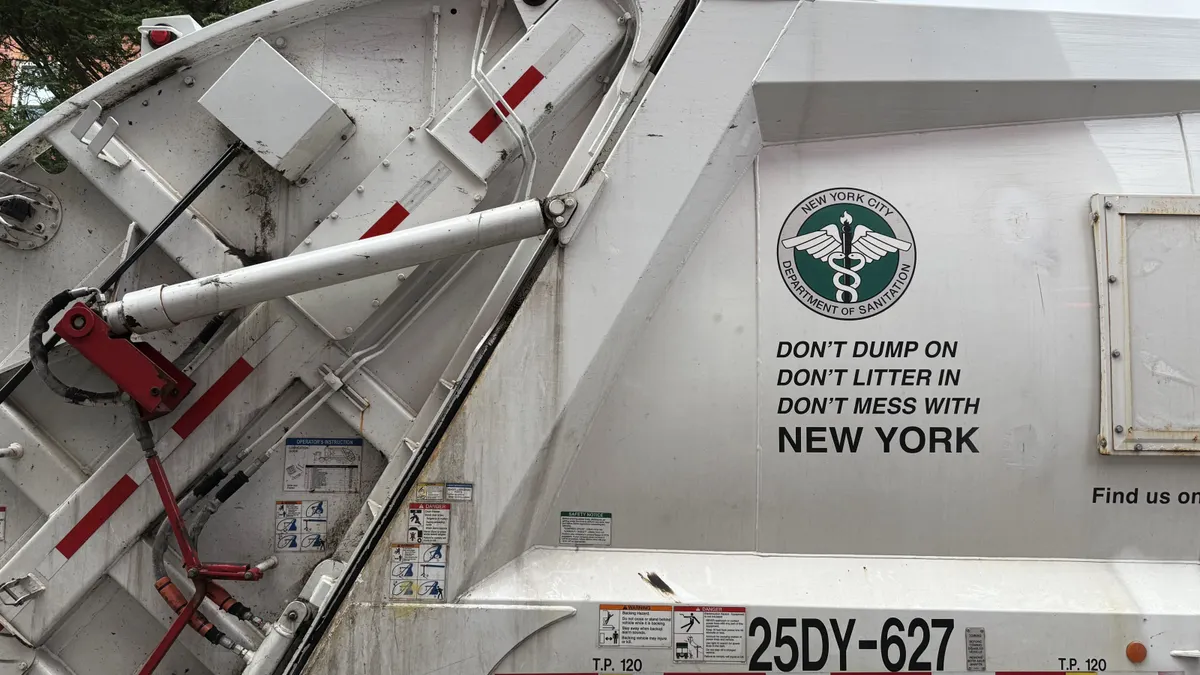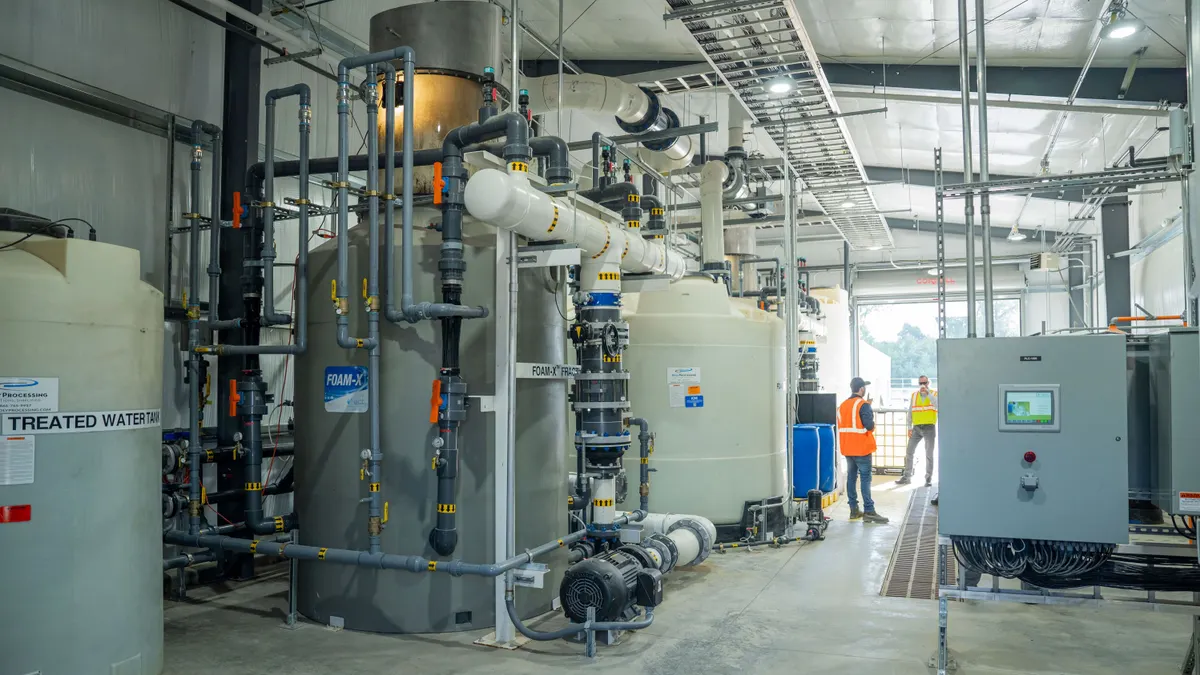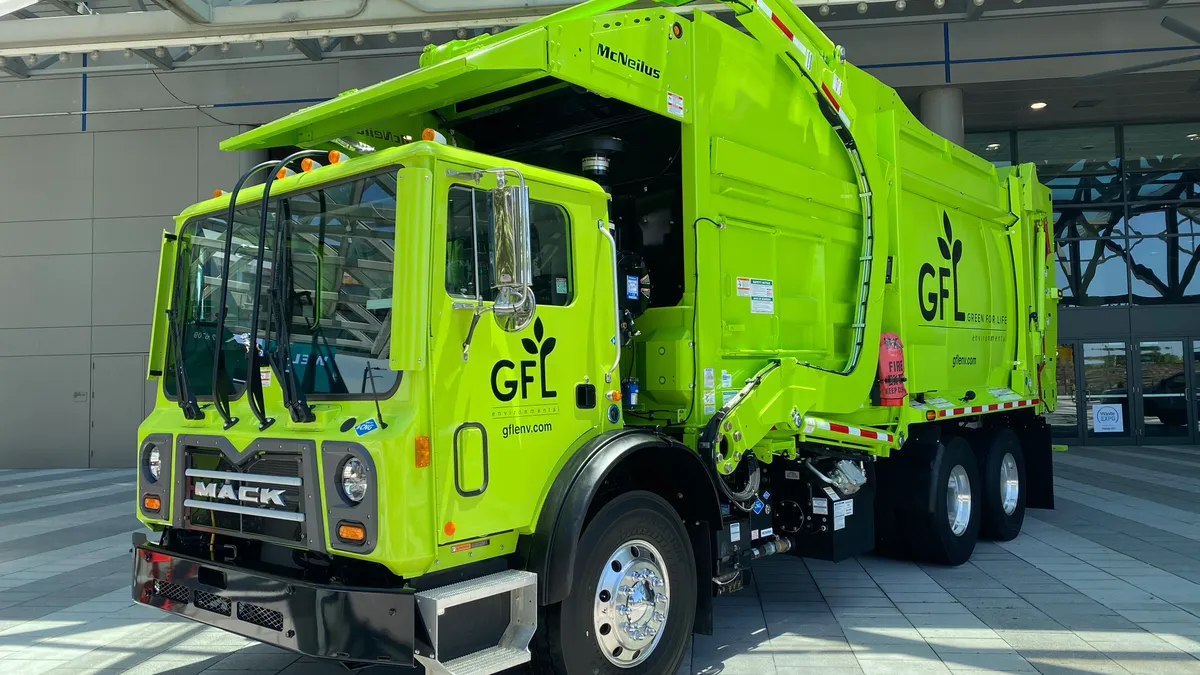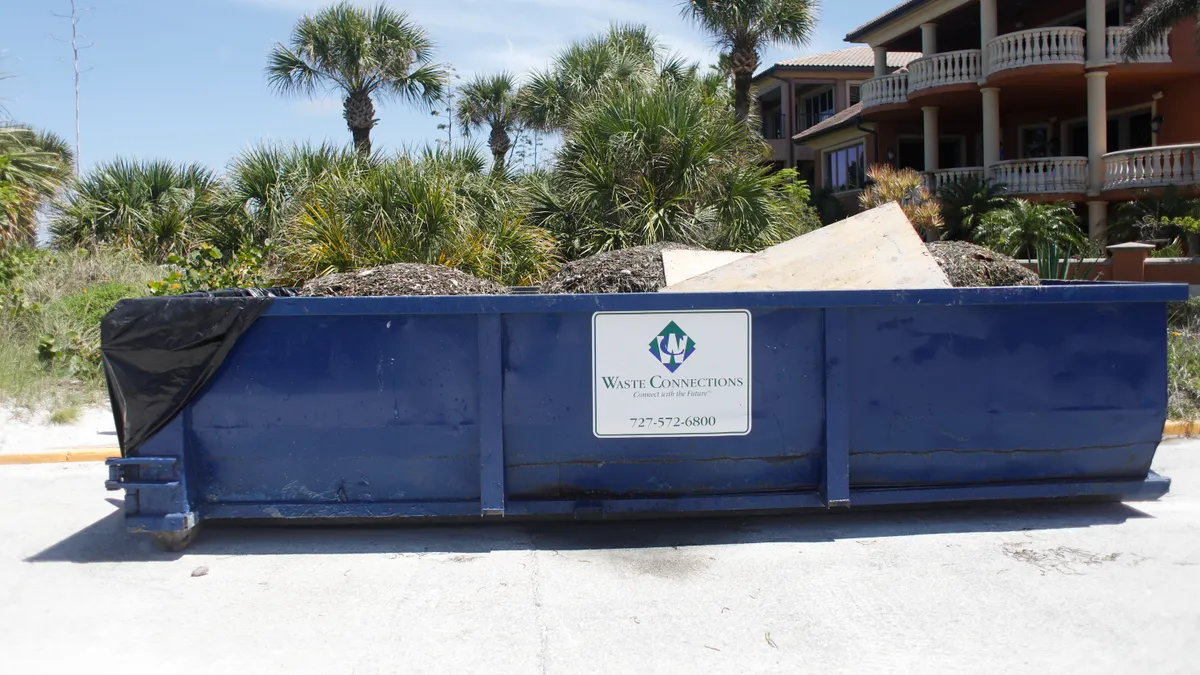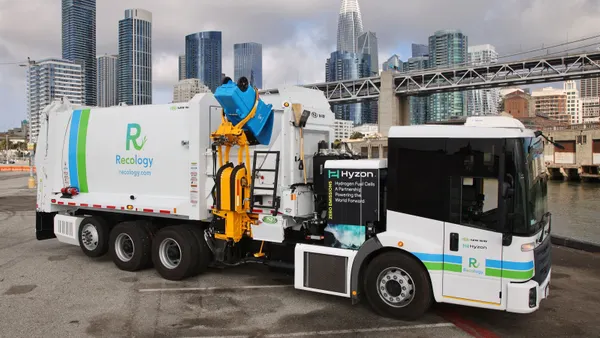Updated artificial intelligence capabilities are helping waste collectors automatically identify contamination inside recycling carts long before the material arrives at a MRF.
Collection vehicles have been outfitted with cameras for years, mainly for safety and fleet management applications. But in a newer trend, haulers are attaching AI-enabled camera systems directly to recycling collection trucks in order to see and measure items in recycling bins that shouldn’t be there.
Such a system can capture images of the material as it’s dumped into the truck. Then, it analyzes the images for incorrect items, such as stray plastic bags or food waste, and sends photos of the offending items directly to customers to offer personalized feedback on how to recycle correctly.
In addition to identifying contamination using AI, the system can often identify other issues such as overfilled containers or bins that were not placed out in time to be picked up.
Municipalities are starting to purchase the technology from a variety of companies as a way to reduce contamination-related costs and serve as an enforcement strategy in communities where contamination can lead to fines, said Craig Wittig, The Recycling Partnership’s vice president of grant implementation. Many truck-mounted AI technologies can also mark pickups as complete using GPS, something drivers used to have to do by hand.
“This is on the cusp of really taking off, especially with municipalities,” Wittig said. “They have a vested interest because they are the ones that are paying contamination fees. They're the ones that are impacted by increased processing fees or straight out rejections. This technology can give concrete contamination data.”
Truck-mounted technology also allows companies to collect this insight without requiring added labor from drivers, and it can do it “at scale and in a highly automated fashion,” stated Ken Tierney, product manager at AMCS Group, in a news release announcing the company’s partnership with private haulers and municipalities.
WM has its own technology, known as Smart Truck, which the company said is installed on “thousands” of its vehicles, including throughout California and Texas. Trucks equipped with Smart Truck technology reduce contamination by as much as 20% when paired with targeted educational outreach, the company said.
Brent Bell, WM’s vice president of recycling, told Business Insider in a sponsored post that it’s a powerful tool to help “remove the guesswork and educate our customers, so more materials can be captured and used again.”
Other cities have more recently adopted similar technology. East Lansing, Michigan, partnered with Canadian company Prairie Robotics to install AI-enabled, truck-mounted cameras in the hoppers of city collection vehicles. The city wants more data on contamination issues, but it also uses the technology to measure recycling program participation, Wittig said. TRP and the Michigan Department of Environment, Great Lakes, and Energy provided grants and technical support.
East Lansing “has a MRF contract that has tolerances on contamination, and while they weren't exceeding them, they wanted to be proactive in their approach and be an active participant in the recycling system,” he said.
Early results show the program has reduced contamination by about 25%, Michigan EGLE said. That success has helped the program expand to Bay City, Michigan, which is in the midst of a six-month pilot project that uses the same tech on its own fleet.
“Public education is critical, because when wrong items are inadvertently placed in the recycling cart, they can injure workers at the recycling facility, lower the quality of good recyclables, and damage sorting equipment,” said James Blake, Bay City’s environmental services manager, in a statement.

Meanwhile, Peninsula Sanitary Service, a hauler that has served Stanford University in California for more than 80 years, recently partnered with AMCS to add that company’s Vision AI technology to collection vehicles. Last year, the university and the hauler negotiated a new 10-year contract that included an agreement to use the camera technology. Stanford sees the tech upgrades as an important step toward achieving its 2030 zero waste goals.
A major strength of truck-mounted AI systems, Wittig said, is their ability to automate a process that is typically time-consuming and potentially dangerous for humans to do. A “feet on the street” contamination audit generally requires humans to physically walk pickup routes, open up bins by hand and take photos of contents. This type of audit can cost a city up to twice as much as installing truck-mounted AI systems, he said.
However, human auditors have also benefited in recent years from handheld AI-assisted technology, such as contamination-finding, smartphone-based tools like Zabble, Wittig said. Last week, Zabble announced it received a grant from the U.S. EPA to continue developing its contamination monitoring software that helps haulers and jurisdictions in California meet contamination requirements laid out in SB 1383.
Handheld technologies can still offer users valuable contamination insights, but truck-mounted technologies tend to offer a more instantaneous, automated process, Wittig said. Most of the available truck-mounted contamination technologies have features that can directly mail or email images to its customers to alert them to any issues, often pairing it with educational information about what is and is not recyclable.
In East Lansing, the pilot program is seeing “promising” results as customers continue to get personalized postcards showing contamination and offering tips. “When you recognize your own Albertson’s bag [in the photo], it makes an impression that is close to home,” Wittig said.
However, a major limitation of automated AI systems is that the cameras are often mounted inside the truck and measure contents as they’re dumped, Wittig said. “The cart’s already in the air and tipping into the truck, so if you had significant contamination, you can’t really stop that from going into the truck. At least with [feet on the street audits] you can reject the cart,” he said.
Though truck-mounted systems for contamination control aren’t as common as other truck-mounted camera systems meant to optimize routes or monitor safety, Wittig thinks more companies will adopt contamination-related AI for their fleets in the future. States and communities with strict contamination guidelines are looking for faster, more reliable ways to gather data to meet reporting requirements, he said.
Extended producer responsibility legislation will likely drive more AI business, he said, since EPR bills require data reporting on packaging and other materials producers must manage at end of life.
“AI is already light years ahead of where it was a few years ago, and we’ll continue seeing new applications,” Wittig said.









